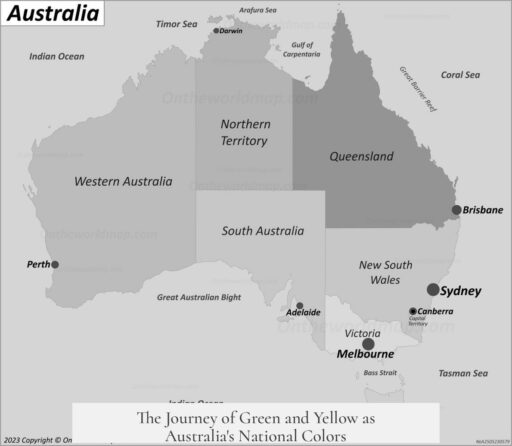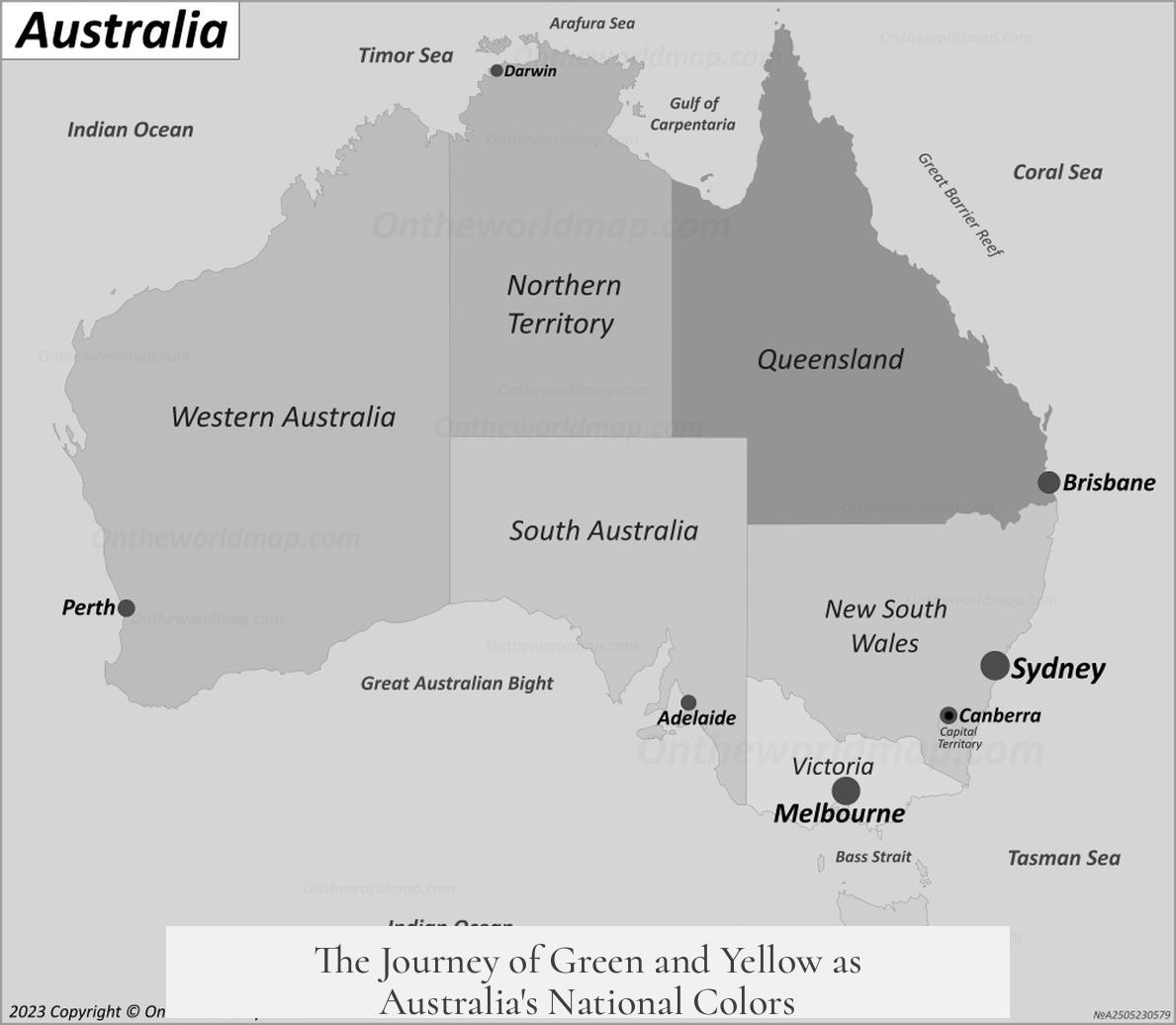Green and yellow, officially green and gold, became Australia’s national colors mainly due to their association with the golden wattle, the country’s national flower. The formal adoption happened in 1984 when these colors were selected for Australian sport to create a unique and meaningful identity.
Before 1984, Australia did not have fixed national colors. Various schemes appeared over time. Green and gold were already in use in the late 1800s, reflecting natural elements. Alongside these, red, white and blue came from the Australian flag, mirroring British heritage. Blue and gold were drawn from the coat of arms, linked to the official wreath granted by Royal warrant in 1912.
The choice of green and gold in 1984 formalized an already emerging pattern. The colors evoke the golden wattle (Acacia pycnantha), which features prominently in Australian symbolism. The green corresponds to the plant’s leaves, and the gold to its flowers. The specific shades defined are PANTONE®348C for green and PANTONE®116C for gold. This gave Australia a color scheme both visually distinct and culturally significant.
The background to choosing green and gold also ties to sporting identity. Commonwealth countries often shared red, white, and blue colors through British influence. This similarity made differentiation difficult in international competitions. For example, New Zealand adopted black and silver tied to the silver fern and Māori culture, highlighting a trend of unique national colors in sport. Australia’s adoption of green and gold aligned with this global movement toward distinctive national representation.
The colors now serve as a symbol across multiple Australian teams and events, reinforcing national pride. They provide a consistent image that connects to Australia’s natural heritage and visual identity, moving beyond colonial colors toward a unique Australian presence.
| Aspect | Details |
|---|---|
| Year Adopted | 1984 |
| Official Colors | Green (PANTONE®348C) and Gold (PANTONE®116C) |
| Symbolism | Golden wattle, Australia’s national flower |
| Pre-Adoption Use | Late 1800s in various Australian representations |
| Other Colors | Red/white/blue (flag), Blue/gold (coat of arms) |
- The green and gold colors formally recognize the golden wattle.
- They provide a distinctive national image in sports and culture.
- Preceding schemes included colors tied to British heritage and national symbols.
- Adoption was influenced by the need for distinct identity among Commonwealth countries.
- Green and gold symbolize Australia’s natural environment and national pride.
How Did Green and Yellow Come to Be Associated as “National Colors” of Australia?
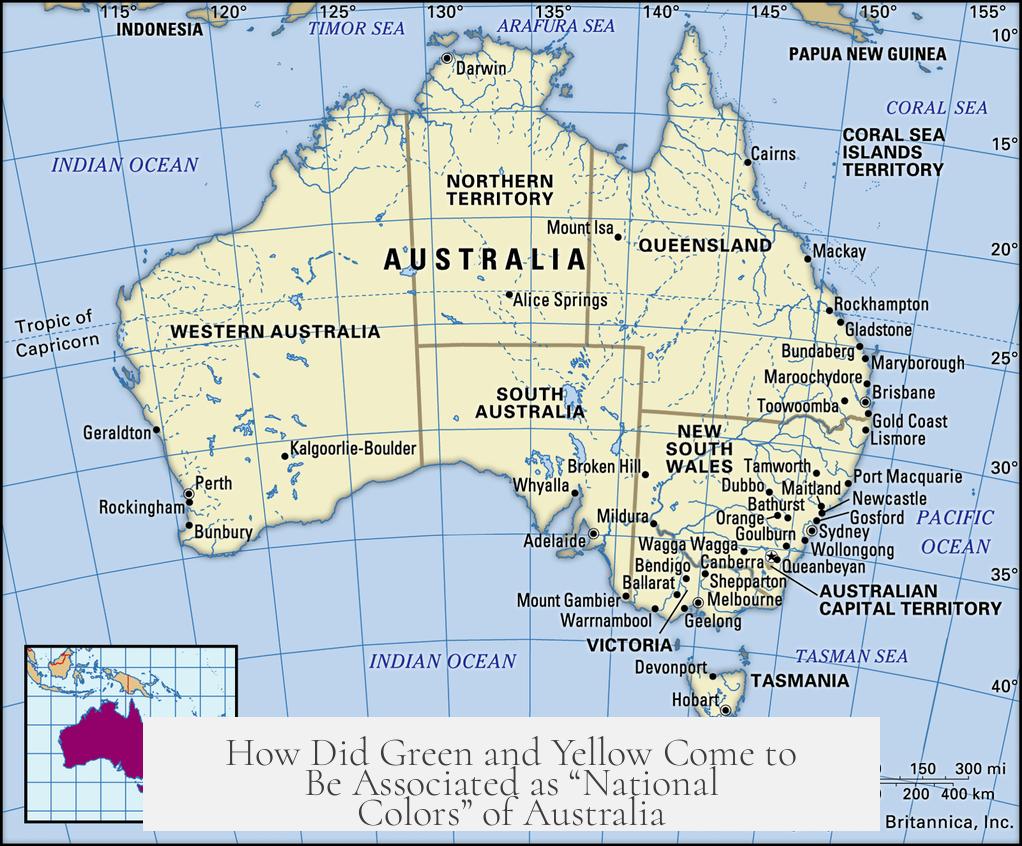
Green and yellow became Australia’s national colors officially in 1984, adopted primarily in sports to reflect the golden wattle, the nation’s floral emblem. But this simple fact has a rich history behind it, blending nature, history, and a dash of sporting rivalry.
Why green and yellow? Why not the familiar red, white, and blue that splash the Australian flag? Imagine being at a sports match and noticing that Australia’s allies and rivals among Commonwealth countries all sport flags dominated by red, white, and blue. Australia needed to stand out. The solution came from the bush—the golden wattle (Acacia pycnantha).
The golden wattle burst into the national consciousness as a symbol of unity and identity. Its bright yellow flowers and rich green foliage provided the perfect palette for Australian pride. By 1984, these colors were officially recognized in Australian sports, with green designated as PANTONE®348C and gold as PANTONE®116C, creating a distinct and vibrant identity.
A Brief History Before the Official Adoption
But the story doesn’t start in 1984. Green and gold appeared sporadically as early as the late 1800s. Before that, Australia’s symbolic colors were all over the place. Sporting teams donned light blue and maroon—colors representing various Australian states in 1922’s first international football kit. At other times, red, white, and blue or blue and gold were preferred.
The red, white, and blue colors trace directly to the Australian flag, which itself reflects the country’s British roots. Commonwealth countries shared this palette, leading to confusion during international sports events. For example, New Zealand added black and silver to signify Maori heritage, while Jamaica chose black, green, and gold to carve a unique identity away from the Union Jack.
Blue and gold drew inspiration from the coat of arms, specifically the color of the wreath, and were officially granted in 1912 by Royal warrant. But these colors never captured the popular imagination quite like green and gold did.
The Golden Wattle: More Than Just a Flower

So, how did a plant become Australia’s unifying emblem? The golden wattle isn’t just any bush; it’s a symbol of resilience and beauty in the harsh Australian climate. The flowering season often aligns with national celebrations like Australia Day, and the plant’s colors naturally evoke warmth and vitality.
By officially adopting these colors in sport, Australia tapped into a deep cultural resonance. Unlike imperial blue and gold or colonial red, white, and blue, green and gold speak of the land itself. It’s Australia’s environment embodied in color, making it a natural choice for uniting Australians.
What Does This Mean Today?
If you watch an Australian cricket match, rugby game, or the Olympics, the green and gold jerseys aren’t just random choices—they’re a symbol steeped in history. These colors connect players and fans alike to something uniquely Australian, beyond flags, beyond politics.
Choosing green and gold also shows a subtle act of independence. The colors distinguish Australia from other former British territories and align the country more closely with its landscape and identity.
Think about this: when you see those colors on uniforms or merchandise, you get more than just national pride. You get a story of how a nation reshaped its image by embracing its natural heritage over colonial past.
Curious How the Shades Were Chosen?
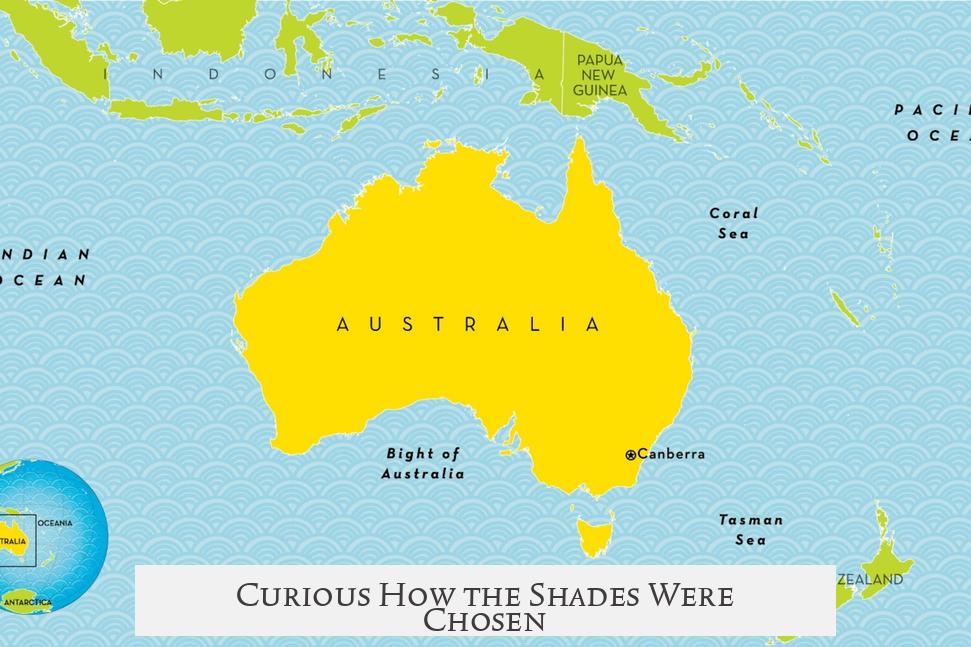
The selection of exact shades—PANTONE®348C for green and PANTONE®116C for gold—ensures consistency across all representations. This precision keeps the colors vivid and instantly recognizable, whether on a jersey, a flag, or promotional materials.
This attention to detail shows Australia’s commitment to these colors being more than symbolic; they are a definitive brand, a badge of honor.
What About Those Early Sports Kits?
Australia’s earliest international football kit from 1922 featured light blue and maroon. These colors represented the states, underscoring how fragmented national identity appeared at the time. Imagine uniforms today looking like that—quite the shocker!
Adopting green and gold gave Australia one cohesive, striking image. Instead of a patchwork reflecting political boundaries, the sports teams became ambassadors for an Australian story told through nature’s colors.
How Can You See This in Action?
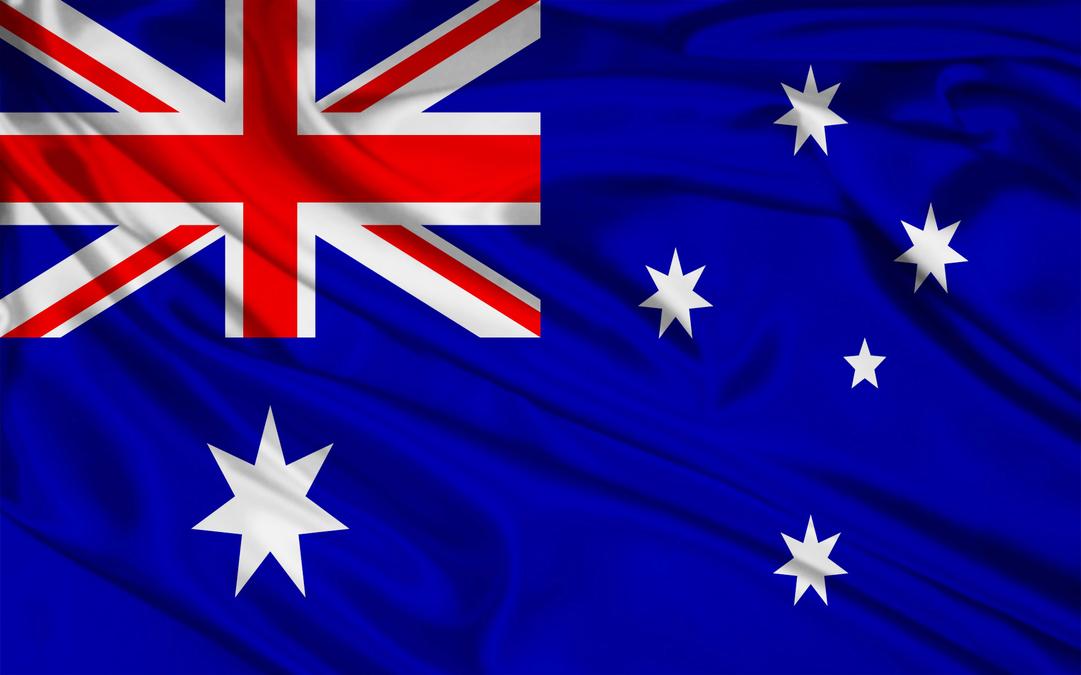
- Check out the Australian floral emblem page: the golden wattle is proudly linked to the colors. Australian Floral Emblem
- Explore the Commonwealth coat of arms for the history behind blue and gold: Commonwealth Coat of Arms
- Dive deeper into national colors history to track the evolution: National Colors History
Final Thoughts
So, next time you see a green and gold jersey, remember: these aren’t just sports colors. They are a celebration of the Australian landscape, a nod to the golden wattle, and an important step in Australia’s journey to define its unique identity.
Green and yellow stand for resilience, unity, and natural beauty. They tell a story of a nation that chose its own colors inspired not by flags inherited from the past but by the golden hues gleaming in its own backyard.
It’s a colorful way to wear one’s heart on the sleeve—quite literally.
